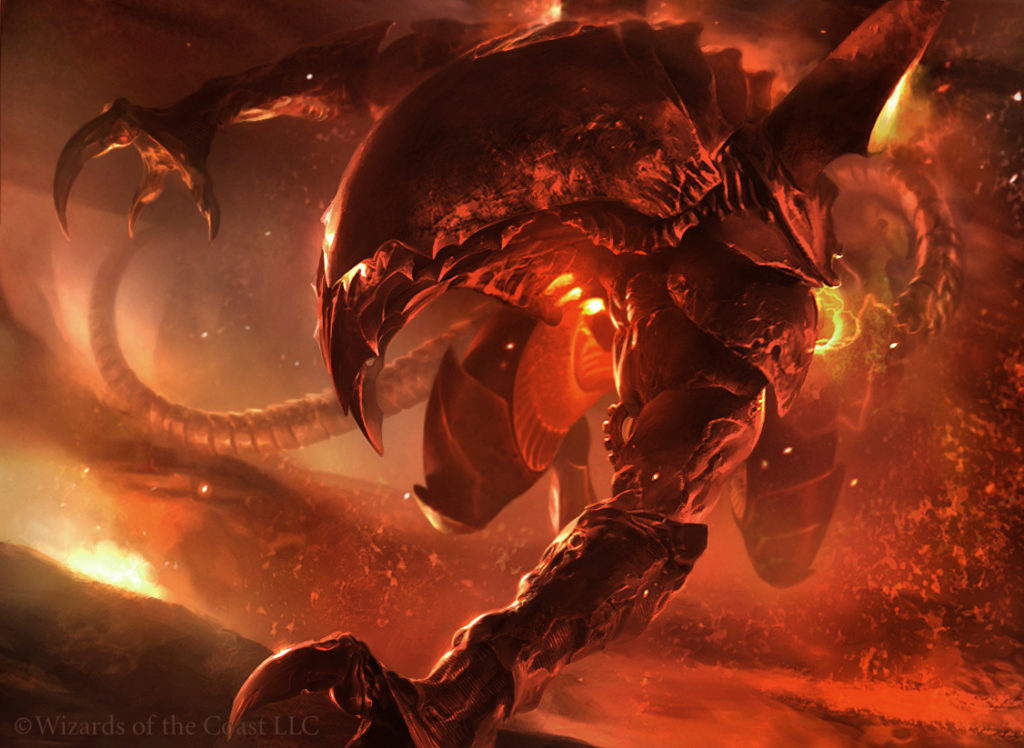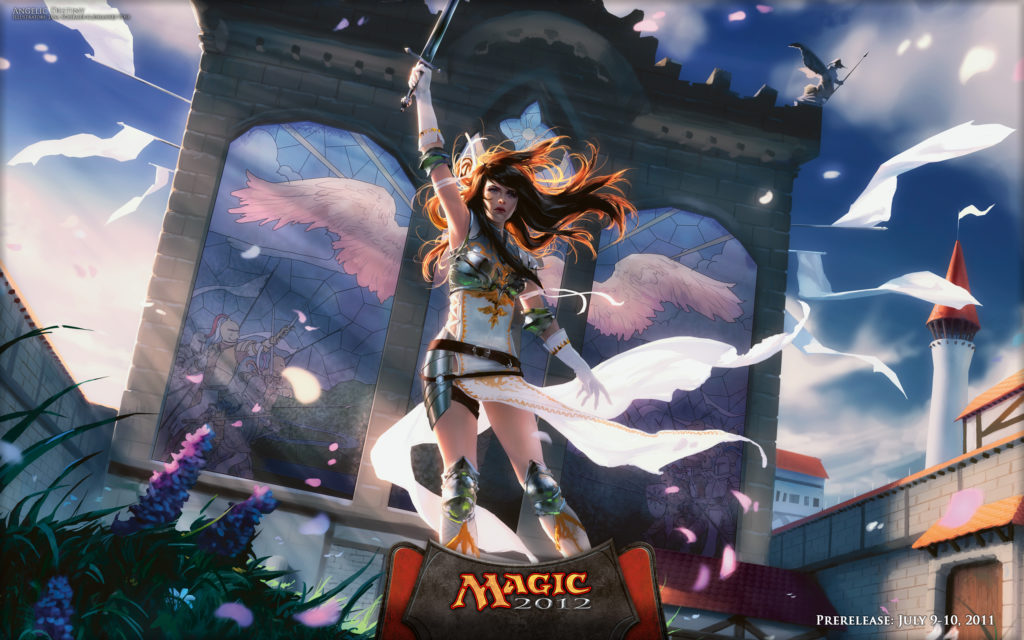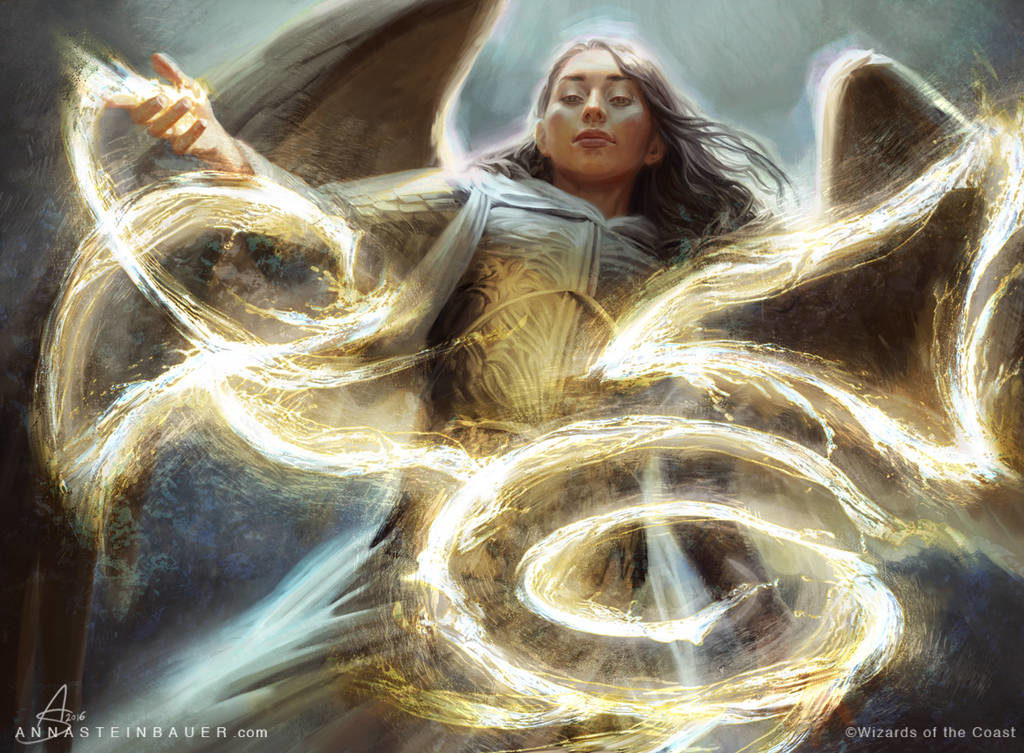Kristen offers up some potential benefits to unplugging from the internet when drafting a Commander deck.
It’s all too easy with today’s veritable cornucopia of content to find yourself spoilt for choice on advice when building a new Commander deck. From mainstays like EDHREC and Tapped.out, to newer favorites like Archidekt, through the many deep-dive deck techs offered on sites like ours, you’re never short of options and things to research. Today on Legion’s Landing I’d like to discuss the upsides to closing your browser window and letting your brain wander down the path alone and unguided.
First, a Word on Homogenization
I briefly discussed the idea of homogenization in my recent article on keeping gameplay fresh; essentially, there will always be a best version of a deck or strategy. This is something to be pursued absolutely in 60-card formats; but here in Commander, we actually have the luxury of a much larger cardpool and the fact that we don’t actually have to place winning above all else. The social contract in Commander, for example, aims to prevent oppressive and grindy strategies that tend to stop people playing at all. A more competitive player would turn their nose up at this; but for many of the more casual to invested EDH players, the idea that the rest of their pod wasn’t having fun would potentially put a damper on their own fun.
We have many ways to mix things up—redundancy of effects, playing multiple colors, going for a tribal synergy or other theme. The possibilities are limited only by what you can think up. So, given the relative freedom that can be enjoyed when building EDH decks, why then do we tend to homogenize our lists?
Well, the main reason is that the wealth of advice and information on the internet means that we don’t actually need to do much playtesting to come up with the most effective and synergistic strategies—they’ve already been posted and written about. Chances are, if you’re building a deck, somebody has built it before and asked the same questions. Why waste the time? Time is a luxury, after all.
As much as I respect EDHRec and the work that the team put in there, I think the site perfectly illustrates the main pitfall that many of us fall into. When such a bountiful and complete resource is available, why go elsewhere? I will say that I’m not here to do an evaluation of EDHRec. In short, the site’s fantastic—but it doesn’t do much for preserving your individuality or growth as a player.

Urabrask the Hidden by Brad Rigney
A quick comparison of some of my decklists shows that many of my favorite niche cards are either way down the list of most played, or not even present, as suggestions for some of the Commanders on the site. Urabrask the Hidden, a lynchpin in any effective Aurelia, the Warleader deck, doesn’t make it to the page for our esteemed Boros General; but Skyknight Vanguard, a relatively ineffectual uncommon from a recent set, does. As a player that joined the game post-Phyrexia, you’d be forgiven for not realizing Urabrask exists; especially given he is the weakest in a cycle of cards that only see EDH or Cube play.
Whether this is a drawback of the crowd-sourced data, or an issue with back end analytics is beyond my knowledge. The fact of the matter is that this is a perfect example of why you shouldn’t blindly follow the advice you see on the internet—at least not until you sit down and think about the deck yourself. This advice isn’t limited to aggregate data, either. Every piece of content is informed by the writer’s own experiences, and as such, they will always miss something.
As an aside, it also confirms to me what I already suspected as true—that too many players build Boros decks suboptimally. Go try out Miraculous Recovery, too. It can win games.
Deckbuilding Offline
So, with that out of the way, we can think about the premise. What can deckbuilding “offline” offer? Let’s jump into it.
More of Your Collection Will See Use
Perhaps the benefit with the most tangible impact on this list, deckbuilding offline can help you really get the most out of your collection. Humans are resourceful creatures, and can often make do with suboptimal tools and whatever’s lying around to make truly marvelous inventions.
Going through your cards first means that you might see a solution to a problem that means you don’t need to splash out for more copies of the same card, which can help to keep gameplay fresh and your wallet safe.
Even if a good majority of the cards in your binders and boxes don’t make the final cut, it’s great to actually get down and dirty with your library to see what you can rustle up. Looking through what’s available at home, comparing cards, seeing what would fit on curve—all of these multi-level analysis techniques can jog your brain into gear and get those brewing abilities firing on all cylinders.
An added bonus of this is that you can use deckbuilding time to refresh yourself on what you own, and what you’re unlikely to get any use out of in the near future. Keeping your collection fresh in your mind allows you to keep on top of your trade and sale binder, remember what you need to get your hands on, and ultimately kill two birds with one stone—any way to increase efficiency and reduce effort is always appreciated.
You’ll Learn Things You Never Knew
Especially true if you have a friend or partner to bounce ideas off of, the opportunity to learn niche interactions and experiment with different cards to see if you can build an “engine” or interesting combo is not to be discounted. Sure, most combos are posted online; but the value in figuring out the rules interactions and learning it on your own, or with friends, far outweighs googling it.
Too many opponents I’ve sat across from have played a popular combo in their deck that they found online and didn’t go to the effort of actually figuring it out. This can produce an awkward game environment, especially if the player receives outside help to perform the multi-staged stack-fu and you’re waiting to trip them up with interaction. Sure, EDH is a casual game, but you shouldn’t be rewarded for cramming in popular cards if you don’t understand how to use them.
Further to this, only by shortlisting cards can you begin to see how a deck shapes up. As I reach the stage of my first draft—anywhere from 85-110 spells, usually—I like to pull the cards out of the traditional mana curve and sort them into piles. Card Draw, Ramp, Recursion, Removal, Interaction, Synergy, and Beatsticks are the usual ones, with more if needed. As you evaluate where you can afford to make cuts, you can often spot card interactions that can sway you to keep certain cards in the deck.
A great example of this is when I was recently building Alela, Artful Provocateur. Through the deckbuilding process, I pulled out both Enchantment synergies and Artifact ones; and based on what I had to work with, identified the strongest synergies on my table and worked from there.
Although I ended up gravitating toward more of an Enchantress build, I ended up keeping some of the artifacts such as Dispeller’s Capsule and Executioner’s Capsule. This was because I had shortlisted Restoration Gearsmith, Sevinne’s Reclamation, and Sun Titan. Had I been only looking at the Enchantment builds section for Alela on EDHRec, I might not have shortlisted them at all.
It’s also why it’s sometimes better to run the “suboptimal” Open the Armory over Enlightened Tutor. Most sites and forums will recommend the latter; but if you have a reason to run a lot of equipment, things get interesting. It opens you up to run cards like Darksteel Mutation—being able to instantly grab an answer and not have to draw into it can give you reasons to save the extra money on a copy of Enlightened Tutor.
You’re More Likely to Find Room for Pet Cards

Art by Jana Schirmer & Johannes Voss
I tend to have a rule with deckbuilding—I always try and find room for one to three pet cards in any given deck. This is about the number of flexible slots you tend to have access to while still limiting the effect this can have on the power level of your deck (if that’s what matters to you).
When you do your deckbuilding offline, you can pull these cards out and onto the table during the process without worrying too early about whether you will actually play them. It’s easier to justify them, too, if your early draft finds synergies and cute lines of play that might not be apparent to you otherwise.
One such card I like to run in my Lyra Dawnbringer deck is Angelic Destiny. This is a great card that can really power up some of the non-Angel utility creatures in the deck like Sun Titan or even a lowly Bishop of Wings. With Lyra as a Commander, Angelic Destiny is effectively granting +5/+5, Flying, First Strike and Lifelink for just four mana. Add in the ability to get it back to your hand, and the fact my list is already running enchantment recursion, and it’s a winner for me. Plus it can make Lyra hit for nine damage, which turns a four turn clock into a three turn clock with Commander damage. Not bad.
Again, these kinds of cards are not ones that you’d find on a resource that aggregates decks to find the most popular cards. Angelic Destiny isn’t an obvious choice for an Angel Tribal deck; between the lack of Angel payoffs and relatively unpopular stance on Auras as a card type, it’s easy to see why it hasn’t cropped up. In my deck though? It’s gas.
Your Deckbuilding Will Improve
When forced to complete early drafts of a new deck offline, your deckbuilding will improve tremendously. You’ll be able to bake in extra synergy, and understand it on a fundamental level. You’ll be able to count out the amount of card draw and recursion you have, and make adjustments based on what the minimum should be. This is even more relevant when you take into account the curve of your deck, and where you should be making cuts.
All of these things can be missed when brewing online, and sometimes the most effective tool for your deck might not be what’s popular. Every metagame is different, and only you know what you need to include. My metagame, for example, is spot-removal heavy. I tend to value protection like Swiftfoot Boots, Heroic Intervention, and Boros Charm quite highly, and pack a lot of creature-based recursion because sticking creatures can be difficult.
When to Get Back Online
Once you’ve committed to this part of the process, feel free to get back online and do some research. As I’ve mentioned earlier, just as every piece of content will miss certain things, so too will your approach to deckbuilding. When you boot up your web browser, have an idea of the things you’re lacking—whether that be synergistic card draw, a way to protect a creature or just a general idea that there “must be some card out there” that has an effect you want.
One of the most rewarding aspects of building like this is the vindication that comes from seeing just how many of your shortlisted cards are considered the most crucial aspects of a deck. Being able to validate that you know what you’re doing, and that you picked out the best cards already, will give you confidence as a player and is leagues more satisfying than checking for these cards up front.

Austere Command by Anna Steinbauer
I’m a huge fan of sites like EDHRec, and I visit them every time I build a deck. They’re a solid resource and I can thank them for filling a lot of holes in my deckbuilding. But, as time goes on, I increasingly find myself coming to them as the last point in my deckbuilding process—the Editor, if you like. Just as an Editor can proof your writing and offer feedback and point out things you’ve missed, so too can these sites for your decklists. I believe that to grow as a player you should consider approaching things in this manner—you never know what cool interaction you comes across, and sharing it with the world is bound to be a great feeling. It’s what got me into the content side of things, and it’s what I love the most about Commander—making a deck truly my own.
Kristen is a lover of both Limited and Commander, and can most often be found championing the Boros Legion when called upon to sit down and shuffle up. Based in the UK, she works as a software developer, and her love for the Legion is second only to her appreciation for Lord of the Rings and Mass Effect.

